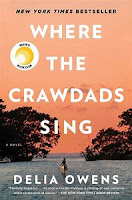Funny Farm by Laurie Zaleski is a well-written, interesting, and heartwarming memoir subtitled My Unexpected Life with 600 Rescue Animals. She owns and runs the Funny Farm Animal Rescue in New Jersey and tells in the book the story of her life from a young age interspersed with stories of animals on the farm.
Zaleski grew up under very different circumstances that most, with her mother at the age of 26 leaving her abusive husband and taking Zaleski and her two siblings to scrape out a living in a rented shack in the woods. Her mom, Annie McNulty, was persistent and resourceful, taking on whatever work she could get in order to have food. She also brought home animals from her job cleaning cages at the local Animal Control. The family had little money, but over time would have in and around their house animals including dogs, cats, chickens, roosters, geese, raccoons, goats, sheep, pigs, and a horse.
While her mother was a good and kind person, caring for animals in need and raising her children well even with them having no money, Zaleski’s father was a horrible one, almost certainly killing their dogs and horse as an act of revenge for his family leaving.
Zaleski is a good writer and it’s a nice story she tells, one of grit and care. The stories of her animals at the Funny Farm rescue are great ones, including those of oddball animal friendships, with Hope the blind kitten and Jello, her seeing eye duck, Lorenzo the llama and his donkey friend Jethro, and Yogi the steer and his alpaca friend Cooper. Also wonderful are the stories of first Chucky and then Tucker, dogs with megaesophagus. It was difficult for them to keep food down so they had to sit upright in a “Bailey Chair” that induces food to slide down and actually provide nutrients to the body, rather than being immediately thrown up.
She writes how kids see the rescue animals, during school assemblies and at the farm, and hear their stories of both getting along with others different than them and helping others with infirmities. It’s a great message and also compelling reading about inner-city kids being exposed to animals and a different way of life.


